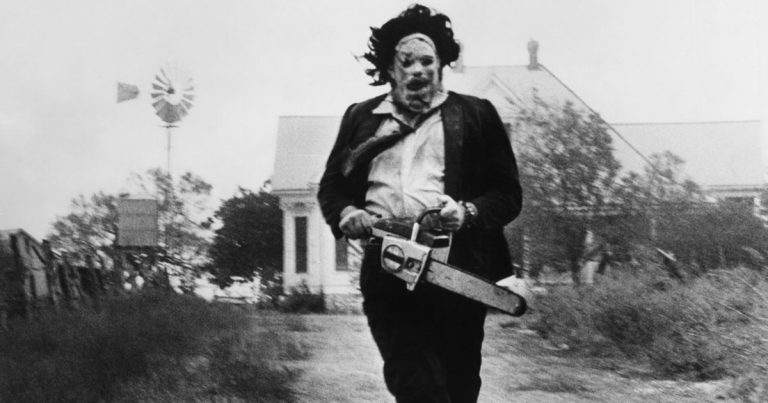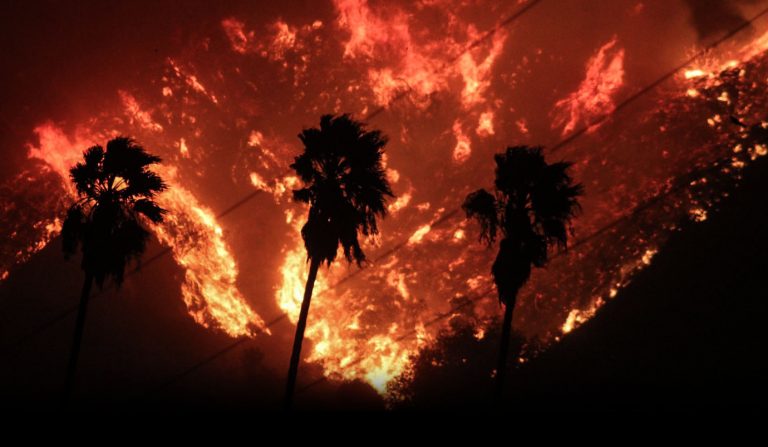Texas Chainsaw Massacre: A Retrospective
The horror genre as we know it today has underwent an unseeming resurgence in popularity due in part to larger production driven revivals of previous generation horror films from studios like Platinum Dunes as well as the innumerable amount of PG horror films to broaden the appeal to audiences that do not wish to partake in extreme violence, gore, and sexual themes.
Within the general umbrella of many film genres, there exists a general understanding of certain films that transformed its genre or introducing certain elements or themes not yet seen before. For example within the romance film genre, Gone With the Wind is often seen as the pinnacle of historical-romantic-drama as it seamlessly combines the set piece of the American South post-Civil War Reconstruction with romance and melodrama of the films that preceded it.
But what of horror?
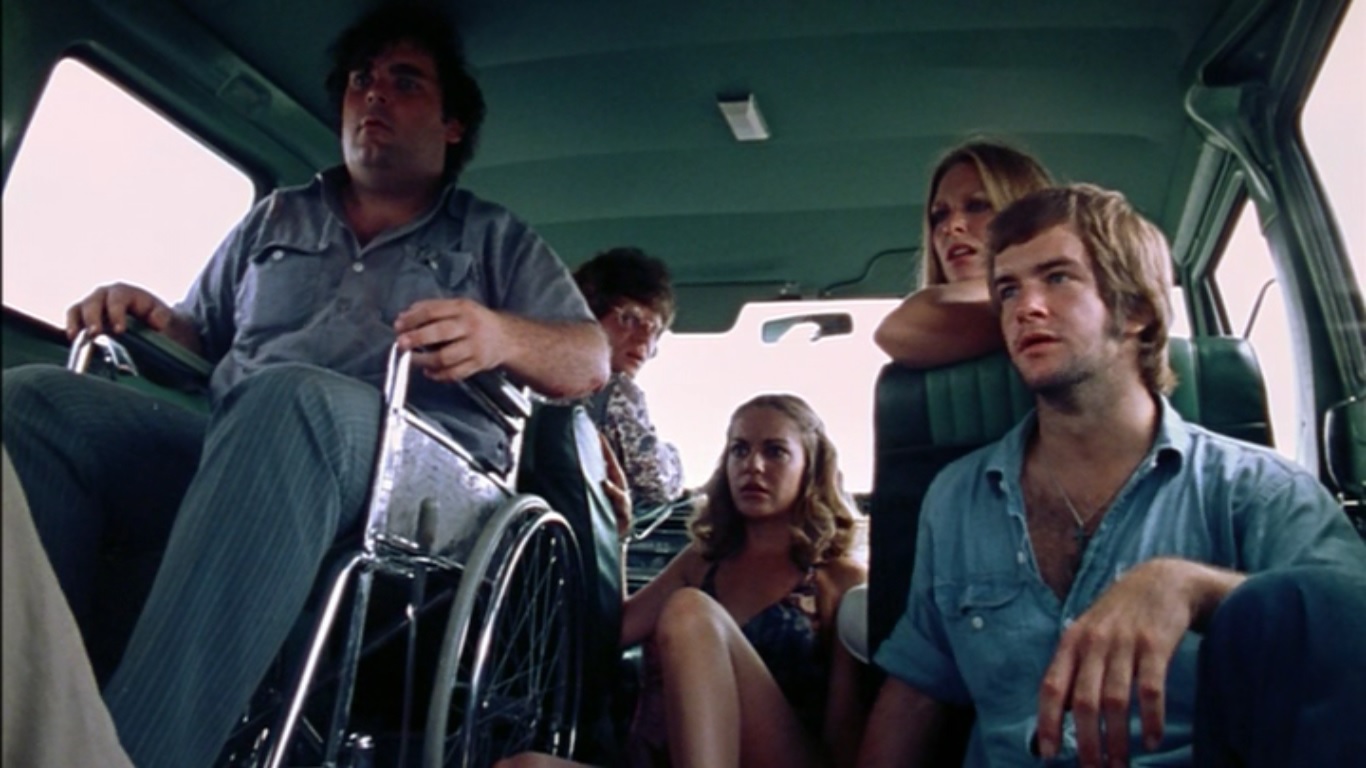
The horror genre in itself underwent transformation along with the natural progression of time. The Earliest horror films delve into the theme of xenophobia as an element of horror with Carnival of Souls (1962) being one of the best earliest examples. Shortly before Carnival of Souls, however, Alfred Hitchcock wanted to experiment with mental instability and an underlying Oedipal complex as a potential theme of horror to overwhelming success with 1960’s Psycho. And while animal horror (using animals as an element of terror moreover by the film focusing on the animal(s) vs. the human race) had pockets of success with 1955’s Tarantula remaining a cult hit today, it wasn’t until Hitchcock’s 1963 film The Birds where animal horror found a permanent place as a subgenre of horror.
And at least for the next decade the “creature-feature” became a drive-in staple for both teen dates and adult outings across the US. It was, however, in 1974 when the moviegoer would see a feature so disturbing in nature that just by word of mouth alone, it would reach a monumental level of success.
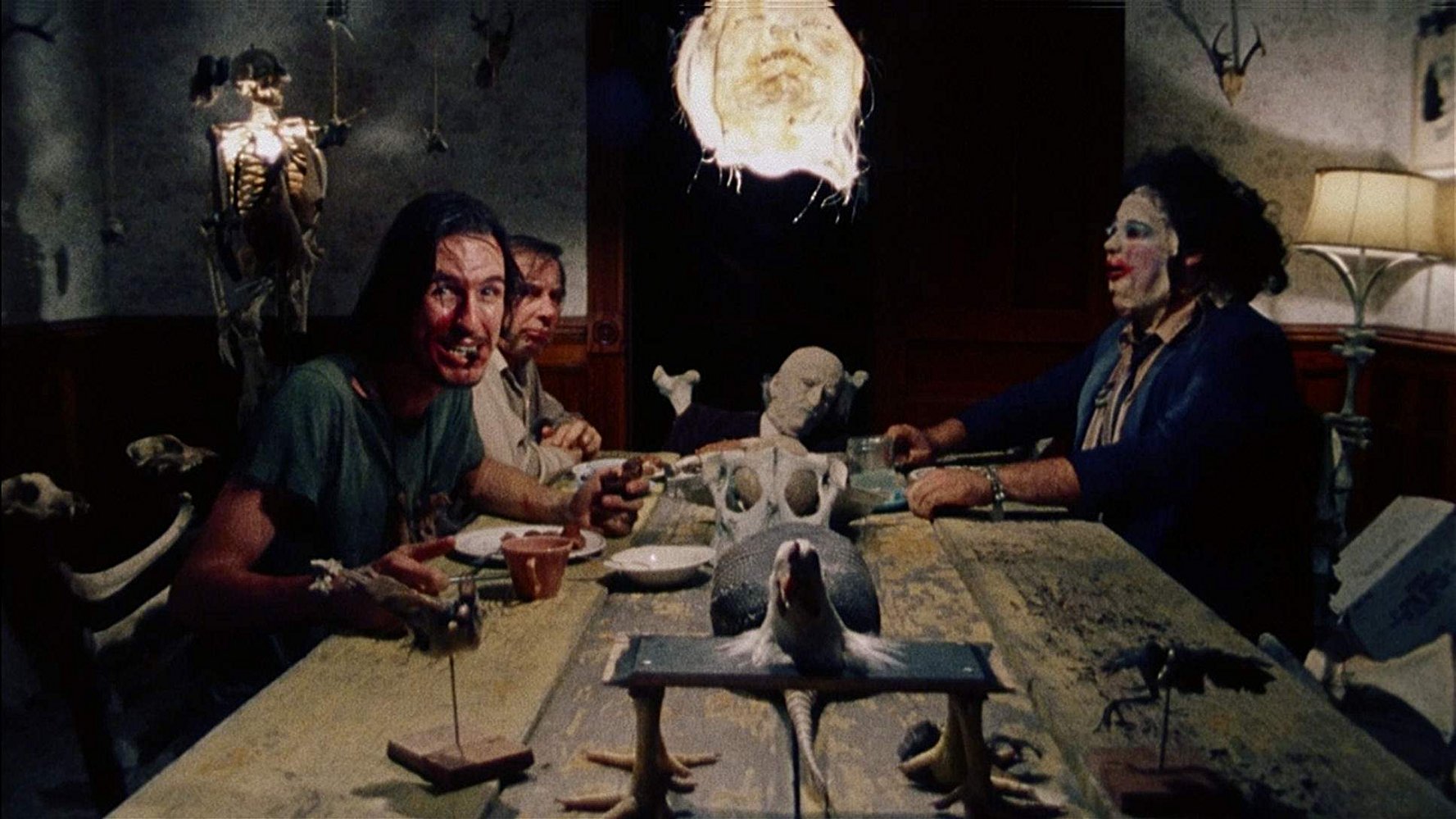
Rising director and producer Tobe Hooper envisioned a feature of horror unlike any ever seen until that point. Shot entirely in central Texas on a budget of just under $300,000 with production days lasting from morning until night alongside an intentional cast of unknown actors, this project became known as The Texas Chainsaw Massacre.
However, it does not go without saying that production did not come without faults. By the MPAA standard set of its time, Texas Chainsaw was deemed on first views by the board grotesquely violent, so much to the point no studio would want to touch it. At this time, violence did not equate to cash. After an extensive revision period, costing tens of thousands of dollars more, it was eventually purchased by Bryanston Pictures for US distribution. However, even with extensive concessions to the onscreen violence, Texas Chainsaw still held a strict R Rating by the MPAA.
For its time, The Texas Chainsaw Massacre introduced many new elements that had never been implemented in previous horror films. From the marketing side, movie posters and promotional stills advertised the movie as being based on true events to appeal to a wider audience. And while now we know that only a small portion of the movie drew inspiration from the grisly murders of Plainfield killer Ed Gein, it was a novel concept that attracted more than a niche audience.
And for the novelty taken in marketing, the film more than compliments in scenes of sadistic violence and torture, all of which are recorded in single shots to capture every detail. While by today’s gory standards, Texas Chainsaw doesn’t bask in a bloodbath to get its point across (albeit for the interaction with the hitchhiker). Rather, to secure distribution, Hooper’s decision to offset gore is supplemented with ghastly setpieces, characters, and attention to its most disturbing details.
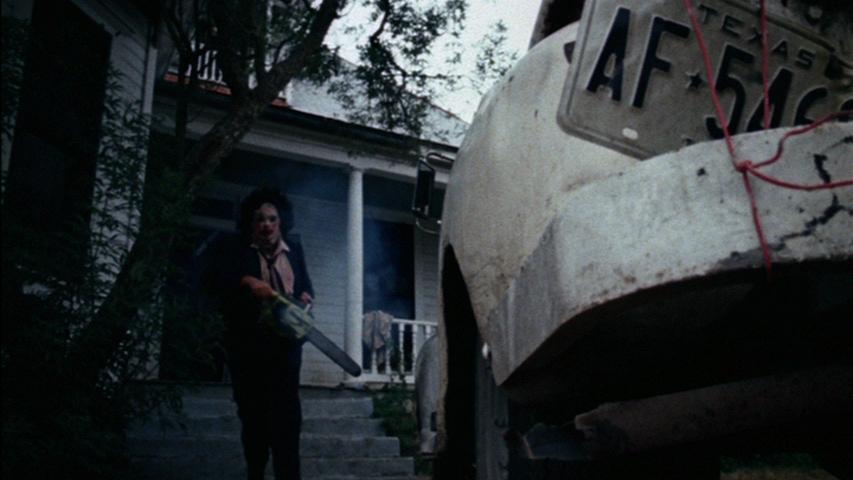
This attention to detail is best seen within the Sawyer house, where most of the film’s most intense interactions take place. To put things in perspective, Hooper and his crew decorated the house with animal hides as well as animal and human bones.
Where The Texas Chainsaw Massacre received the most controversy was its liberal display of violence carried out by a hulking figure only referred to as Leatherface.
To put the novel circumstances of violence within the film to perspective (and keeping the movie characters’ names anonymous to allow those who have never viewed the film an opportunity to experience it), the first shot of Leatherface in the film occurs when a character is lured inside the Sawyer house upon hearing the sounds (or possibly luring impersonation) of a pig being slaughtered. In an attempt to locate the source of the noise, this specific character loses his balance. The audience is then greeted with an upward shot (in almost God like fashion with downward lighting used to further accentuate his presence) of the hulking figure himself, donned in a bloody robe and wearing a mask crafted from human flesh.
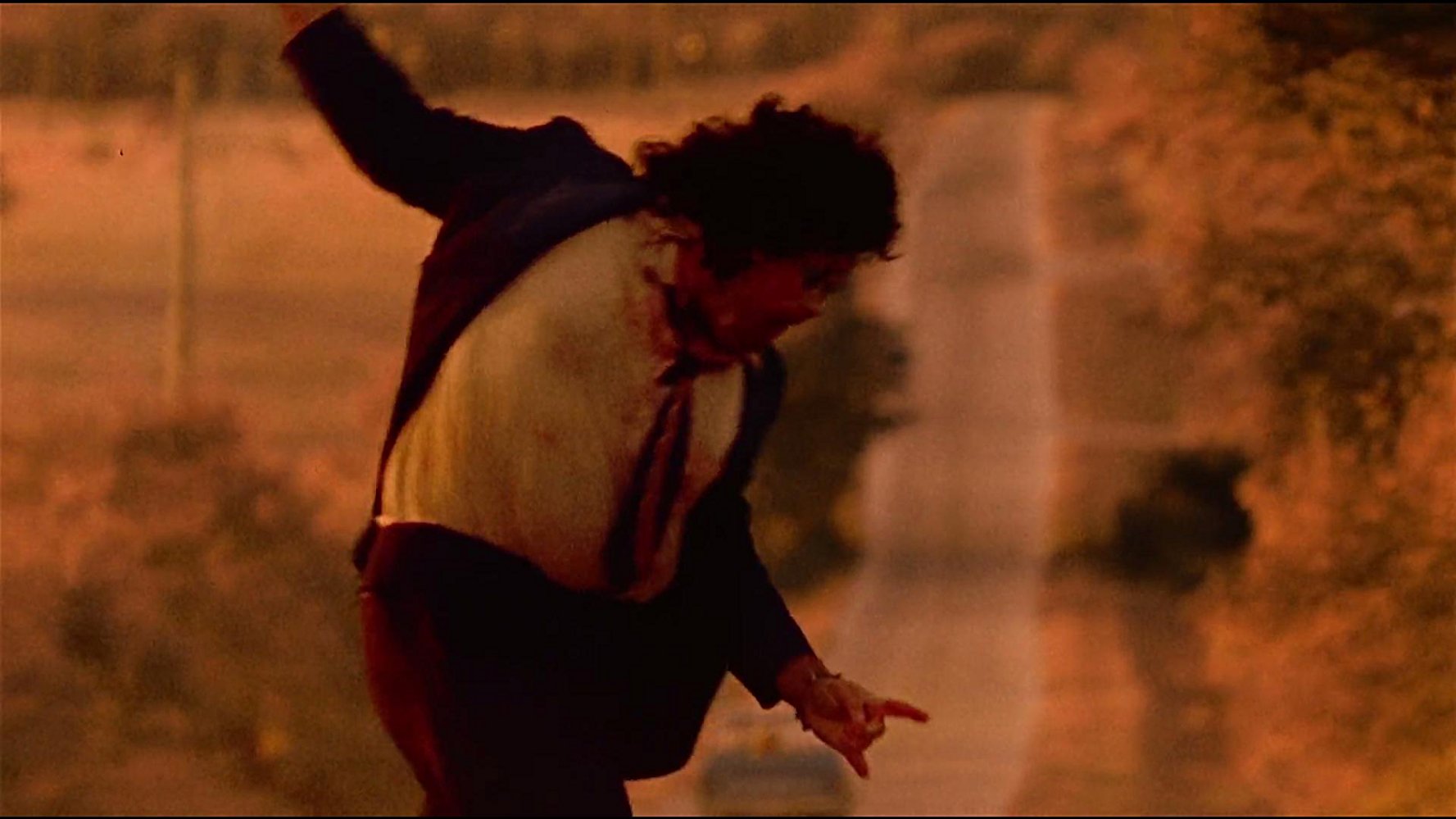 However, what follows immediately after and for the rest of the film helped gain its notoriety. Upon looking up at the gruesome figure of Leatherface, the giant then raises and sledgehammer and proceeds to bash the character in the head, with the sound of cracking bone and the character falling to the floor, shaking uncontrollably from the extreme blunt trauma, only to have his body dragged by Leatherface to the room from which he appeared.
However, what follows immediately after and for the rest of the film helped gain its notoriety. Upon looking up at the gruesome figure of Leatherface, the giant then raises and sledgehammer and proceeds to bash the character in the head, with the sound of cracking bone and the character falling to the floor, shaking uncontrollably from the extreme blunt trauma, only to have his body dragged by Leatherface to the room from which he appeared.
For motion picture standards in 1974, this was definitely no laughing matter and while audiences were equally disgusted and fascinated that such a film could find its way to reel, the killings within the Texas Chainsaw Massacre laid the groundwork for many slasher films (films focused on a central figure whose primary purpose within the film is merciless and gruesome killing) to come within the following decades.
In addition as often being credited with being one of the best examples of an early slasher film, The Texas Chainsaw Massacre provides an equally important impact within the genre of exploitation films as well. While blaxploitation had already found a niche within the African American community preceding The Texas Chainsaw Massacre with films such as Shaft and the Pam Grier Classic Coffy, The Texas Chainsaw Massacre took a foray with exploitation as a driving plot device, definitely a first for a horror film.

While it had been attempted once with Wes Craven’s 1972 film The Last House on the Left, it did not reach the level of success of execution as the Texas Chainsaw Massacre. Both movies include drawn out scenes of inhumane acts of humans committed on humans (The Last House on the Left displaying a rape generously for a couple minutes and the torture and taunting of Texas Chainsaw’s main protagonist lasting a fiendish twelve minutes), Texas Chainsaw shifts the paradigm of exploitation from Last House by allowing the female to live rather than die.
To say the message wasn’t powerful within a raising feminist culture would be a complete understatement but it had its fair share of detractors, dismissing the violence as chauvinistic and empty.
Regardless of which side of the contribution you stand on, the success of the film as an early slasher and exploitation film is unquestionable. While the slasher genre lives to this day, various subgenres of horror exploitation pay clear homage to Texas Chainsaw. And for those who wish to push the boundary further of horror exploitation, one can experience a modern twist with the extreme colloquially known as torture porn.
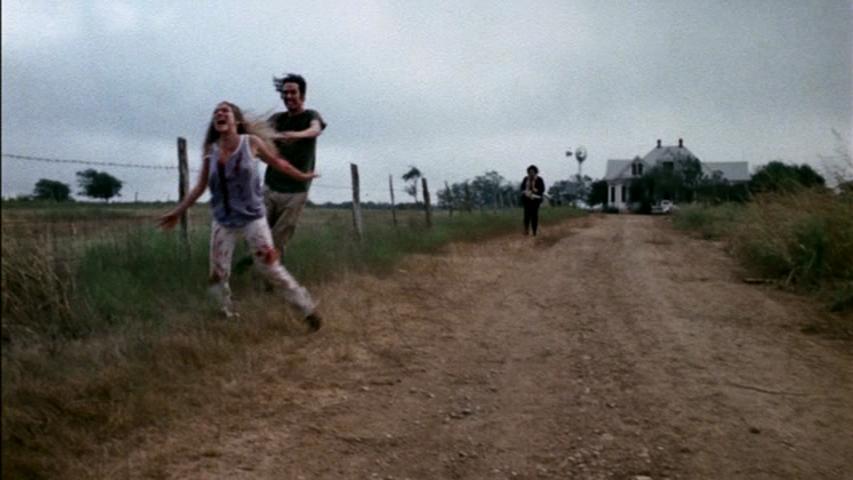
The name itself might imply some BDSM overtone, it’s simply a term used to describe movies that present gore, violence, and torture in film as liberally as sex in a pornographic film (but that’s not to say these films do not contain such content). As the genre grows and wanes, it has seen some mainstream success thanks to films like the Saw franchise. But to fully appreciate the genre, it would be necessary to delve into Eli Roth’s films such as Cabin Fever or the first two Hostel films for American contribution or those who appreciate international film can find many in various countries.
To find a very comprehensive list of such films from an individual who is just a big fan of horror as I am, check out the YouTube channel HorribleReviews.
I could easily go on for a lengthy amount of time on the importance of Texas Chainsaw’s contributions to the horror genre, I believe narrowing it down to the marketing, gratuitous violence, and how the film doubles not only as an early slasher but also as an exploitation film are the caveats to its success.
For those who wish to experience the film, either for the first time or who wish to rewatch it, it can be purchased quite easily from many retailers although Amazon offers the most options for someone who potentially wants to find a collector’s edition of the film.
Please note though, I am strictly speaking of the 1974 original, NOT its sequels or its 2003 remake. While the remake holds its own merits, unfortunately it cannot hold a candle in terms of acting or sheer terror factor. If you are looking for the prime horror experience, one that was so influential in paving the way for future franchises within the horror genre, The Texas Chainsaw Massacre is definitely worth your time!!
This story contains a link to an Amazon product page. We are a participant in the Amazon Services LLC Associates Program, an affiliate advertising program designed to provide a means for us to earn fees by linking to Amazon.com and affiliated sites. Thank you for supporting us in this way.


